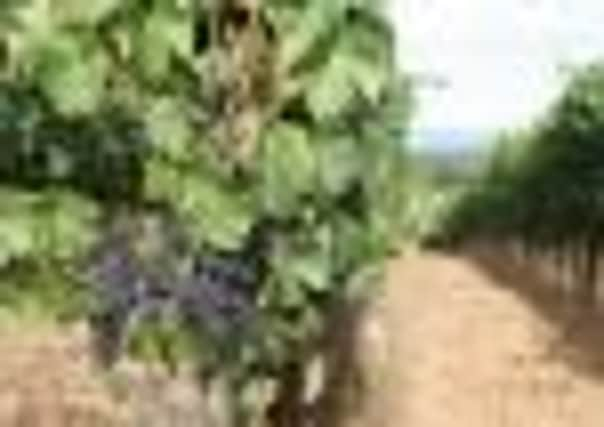Nothing to blush about


But there is good news on the far distant horizon, apparently more producers are sorting out their best Zinfandel vineyards and making those grapes into red wines. At the other end of the scale, many growers are pulling out this venerable, but relatively unprofitable variety and planting something else. The trouble is that once these old vines, some planted over 100 years ago, are pulled up, those dense rich flavours will be gone forever.
Zinfandel is California’s own signature grape, although these days Australia and South Africa are starting to experiment with it and South America already has some vineyards on stream. It is genetically close to the Primitivo of Southern Italy and the Plavac Mali of Croatia but recent fingerprinting has discovered that it was originally from the Dalmatian Coast where it was known as Crljenak Kaštelanski. How it acquired its easy-to-pronounce name of Zinfandel is unclear, but that name has undoubtedly helped in its distribution around the vineyards of California.
Advertisement
Hide AdAdvertisement
Hide AdIt arrived on the west coast of America in the mid-1800s and was planted for its big lush flavours and ability to produce high sugars and hence high alcohol. It was particularly useful during gold-rush days, slaking the thirst of the miners, and even hung on during Prohibition where it was a favourite of home-winemakers. Even now it is California’s most widely grown grape from the Sierra Foothills to the coastal hills of Paso Robles, needing a Mediterranean-style climate with plenty of sun, and, according to Paul Draper, who is one of the best producers of this grape, it needs to be 101 per cent ripe to get all the right fruit flavours.
The Californians were in London last week to show off the range of styles that Zinfandel can produce and that tasting reminded me just how much I like this grape. At the affordable end of the price scale it provides simple, deep lush cherry and blackberry fruit while the serious, more expensive versions are dark with liquorice, mushroom and earthy complexity and end with a balanced acidity that makes Zin the perfect accompaniment to a rare steak.
Ravenswood is probably the most easily available, good value Zin on the shelves (try Ravenswood Lodi Zinfandel 2009, Majestic £9.99). Based in Sonoma’s Dry Creek region it is now owned by one of the big giants of the wine world, but it started out as a small-time company run by Joel Peterson. Now Ravenswood has been bought out, but Joel still spends time at the winery and visitor centre, although these days he drives a rather flash, eco-friendly car. Despite the size of the operation, the wines still manage to conform to his motto for the company – “no wimpy wines”. Still using some of the original grape growers, the wines are made in open top tanks using wild yeast and French oak for aging. The result is a scale of wines that encompass the whole range of Zinfandel flavours. Sadly the top wines such as single vineyard Teldeschi, planted in 1910 and full of chewy plums and chocolate notes, and Old Hill where Zinfandel is co-planted with a whole handful of other black-fruity grapes are difficult to find in the UK.
Even so the Ravenswood motif on the label which if you peer at it carefully shows three ravens in a circle is easy to spot and the Majestic wine from Lodi in the San Joaquin Valley and the Vintners Blend 2009 (Waitrose, £9.99) both provide heart-warming dense cherry and blackberry fruit with a dash of pepper.
Advertisement
Hide AdAdvertisement
Hide AdWith a history going back to 1895 the Seghesio family, originally from Piedmont in Italy, has been growing grapes and making wine in the Sonoma Valley for generations. They have 450 acres of vines and a collection of old Zinfandel clones which act as mother blocks for the whole industry. These old clones each have their own character. It is this attention to detail and a way of blending the flavours in the grapes together that makes the wines so good. While the vines may be old, the winery is sparkling and new with open-topped tanks to allow plunging of the cap to get all those fabulous flavours.
This is a label which often crops up on restaurant lists to put against well-flavoured food such as game, but The Wright Wine Co in Skipton (01756 700886) has Seghesio Zinfandel 2008 at £20.60 and this wine is also stocked by West Mount Wines, a Yorkshire-based mail order company (01484 538399).
While Paul Draper of Ridge Vineyards has a small patch of Zinfandel planted at his mountain-top Monte Bello site, in the Santa Cruz mountains, most of the Ridge Zin comes from north of San Francisco in Geyserville and Lytton Springs in Sonoma. Here all the vines are dry farmed on gravelly clay which allows the grapes a long slow maturation and the wine is made with ultimate care with native yeasts and matured in air-dried American oak. But ripeness is key says Paul. “Zinfandel needs to be perfectly ripe, but not over-ripe to really bring out the best flavours”.
You won’t see the grape name Zinfandel boldly on the Ridge label, mainly because it is blended with a careful selection of other grapes such as Carignane, Petite Sirah and Mataro (Mourvèdre) but the deep complexity in the wine comes from Zin. Try Ridge Geyserville 2007 (Wright Wine Co, £28.60) for its open, vibrant cherry and plum fruit layered with cloves and spice or head for Lytton Springs 2009 (Halifax Wine Co, £18.45 for a half bottle) made from 106 year old vines. This wine has depth and ripeness showing in its dark fruits, tobacco, liquorice and pepper notes.
Zinfandel has been pink and sweet for far too long, it is time to drink it as a red.